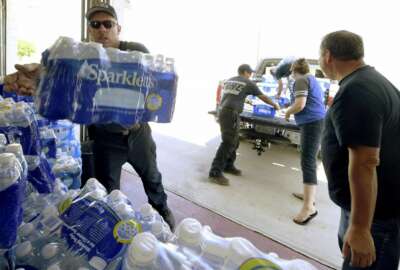
Leveraging data is key to Space Force’s mission, asset protection
Controlling and protecting the new U.S. Space Force’s satellites will require plenty of data. Some of the Space Force’s assets will carry over from the Air...
Controlling and protecting the new U.S. Space Force’s satellites will require plenty of data. Some of the Space Force’s assets will carry over from the Air Force but it is still a new operation.
Maj. Gen. Kimberly Crider, the mobilization assistant to the Chief of Space Operations for the Space Force, said the service experiences space domain via the data it can receive about it, and by leveraging that data.
“So our strategic approach really comes down to pulling in maximum amounts of data into an accessible, multi-level secure cloud-based environment where we can begin to make it available to systems and users, and be able to apply analytics to that data to be able to make faster decisions and define options for various actions that we might want to take to ensure the safety and security of our capabilities in space,” she said on Federal Monthly Insights ꟷ Data Management,
Part of the Space Force’s mission will be what Crider called “space domain awareness,” which means that both space and ground base sensors will capture data about anything in space, from satellites to debris, to planets and stars ꟷ all things which could affect the safety of spacecraft and other assets.
“A lot of this started with, you know, really just trying to maintain safety of flight, if you will, and phase maneuvers. So it’s very important actually, for all nations, to be able to see what’s happening in space and share information to the maximum extent possible so that we can avoid collisions,” Crider said on Federal Drive with Tom Temin. “At the same time, we also want to ensure the security of our assets, and therefore we want to be able to safeguard our data and our information as much as possible, while ensuring that we enable authorized access to our government and allied partners.”
Space Force will also derive data from commercial satellites, as well as from other domains such as air and terrestrial. And due to a continuous data integration between the cyber and space domains, understanding the former is important, she said.
The service is using commercial cloud services to host much of its data, and has a multi-level secure capability called a unified data library.
“It is essentially a data management environment by which we can pull in this observation data from a variety of different sensors again, government commercial allied sensor data, that ground based data, other domain data that I mentioned, all can be hosted and stored in the unified data library,” she said. “We can also point to other data environments where that data may exist cloud to cloud, if you will, or cloud do [on-premises] kinds of connections to make sure we can connect all the data.”
But, she clarified, the data owner will determine what users or partners have access to the data and the information would only be available in a certain classification level cloud. Architectural methods like storing data in different activity zones can increase its cybersecurity resiliency as well as help with backing up information in case of a natural disaster or some other disturbance.
“There’s certainly a lot of security controls that have been established and are in place with the commercial cloud providers who have been FedRAMP-certified and have achieved certain protection levels for protecting the data at the appropriate level of security and safeguarding of the data,” Crider said. “So a lot of those security controls and cybersecurity controls are built into the cloud environments themselves and are part of the cloud services that we leverage.”
Copyright © 2025 Federal News Network. All rights reserved. This website is not intended for users located within the European Economic Area.
Amelia Brust is a digital editor at Federal News Network.
Follow @abrustWFED





